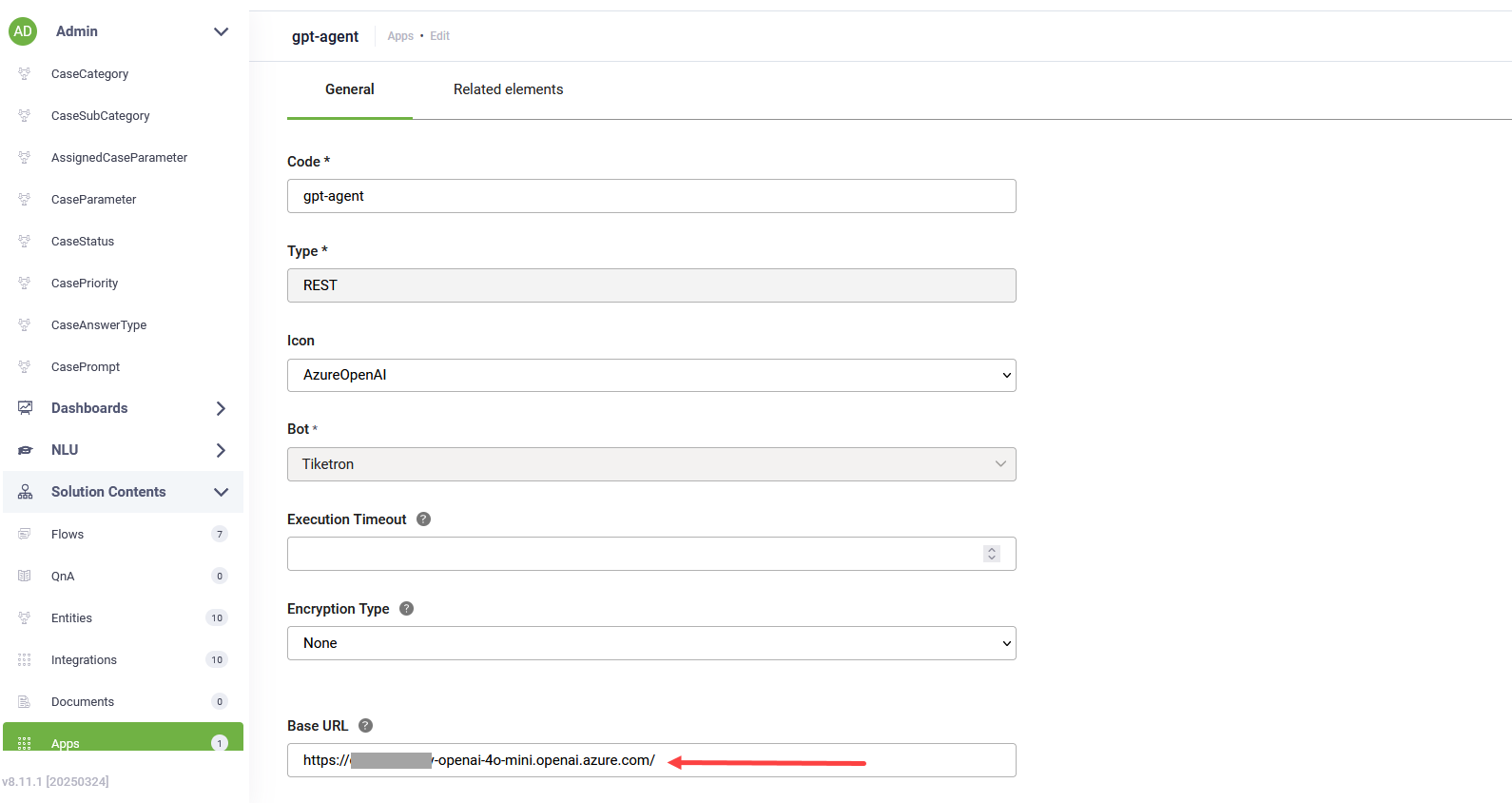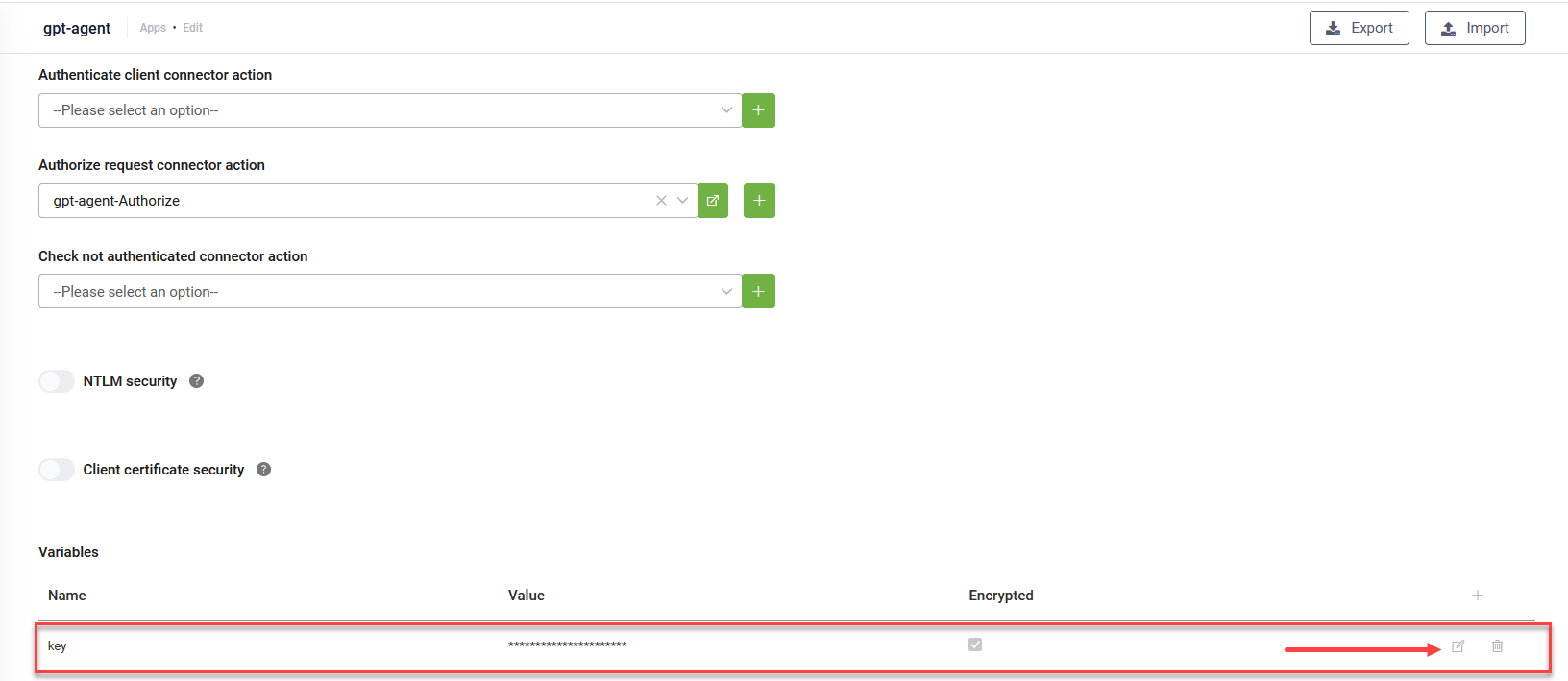GPT Agent Template v2
The GPT Agent Template v2 is an enhanced solution for building fully functional virtual assistants using the new Agentic framework. It serves as a starting point for developing business Agents that handle user interactions efficiently.
Solution Components
The solution includes the following components:
- GPT Conductor Template – An example GPT-enabled workflow that routes user intents to the appropriate Agent based on the business problem. It directs questions to either the GPT Agent Template or the Small Talk Agent Template.
- GPT Agent Template – An example of a fully functional GPT-powered Agent that manages simple ticketing tasks. It understands user issues, runs a conversation to collect the necessary information, and creates tickets in a back-end system..
- GET Solver Function Template – An example of a solver function for the GPT Agent that retrieves information from external systems and provides it as context to the Agent. You can extend this function by integrating custom data retrieval connectors and passing the retrieved data as a response to the GPT function.
- POST Solver Function Template – An example of a solver function for saving data in external systems. You can customize this function by adding your own data insert connectors, using the values collected by the GPT Agent as input parameters.
- Small Talk Agent Template – An example of a GPT-enabled workflow designed to handle generic user questions that do not require specific business context.
- Welcome Template – A simple welcome flow that also runs the database provisioning process the first time the bot is launched.
- GPT Setup Workspace - An admin workspace where you can modify GPT prompts and Agent functions. At runtime, Agents will use the configured scripts to process interactions.
Prerequisites
- Tenant Druid community (open new tenant here) or Druid subscription.
- You should have a Druid bot. For information on how to create a bot, see Creating Druid Bots.
- Enable the API Resources for Druid WebView and Druid Data Service. Then, activate the Druid Data Service in your tenant by navigating to Administration > Settings > Druid Data Service, and selecting Is enabled and clicking the Save all button at the top right of the page.
Configuring the Skill Template
To configure the skill template, follow these steps:
Step 1. Install the solution from the Solutions Library
Go to the Solutions Library, search for solution "GPT Agent Template v2" and import it following the instructions provided in section Installing Solution Templates.
Wait until the import status shows as “Success”.
Step 2. Configure apps connections
Go to solution Apps and configure the gpt-agent connections with your the Base URL and API key for your deployment of the GPT-40 Mini model, either from Azure or OpenAI.
After you configure the connections, click Publish.
Step 3. Set up the bot special flows
Go to the bot settings, Details page and click the Dialog management section header. The section expands. Select the following special flows:
|
Special Flow |
Select |
|---|---|
| Welcome flow | welcome-template |
|
Intent rephrase flow |
gpt-conductor-template |
Scroll down and click Save & Close.
Step 4. Run database setup workflow
Open a new web chat to start a conversation with the virtual assistant. The assistant will first run a setup workflow to add all required GPT prompts in Druid Data Service. Once the setup is complete, you can view and modify the prompts in the "GPT Setup" workspace.
Once the setup is complete, you can start talking to the Agent.


